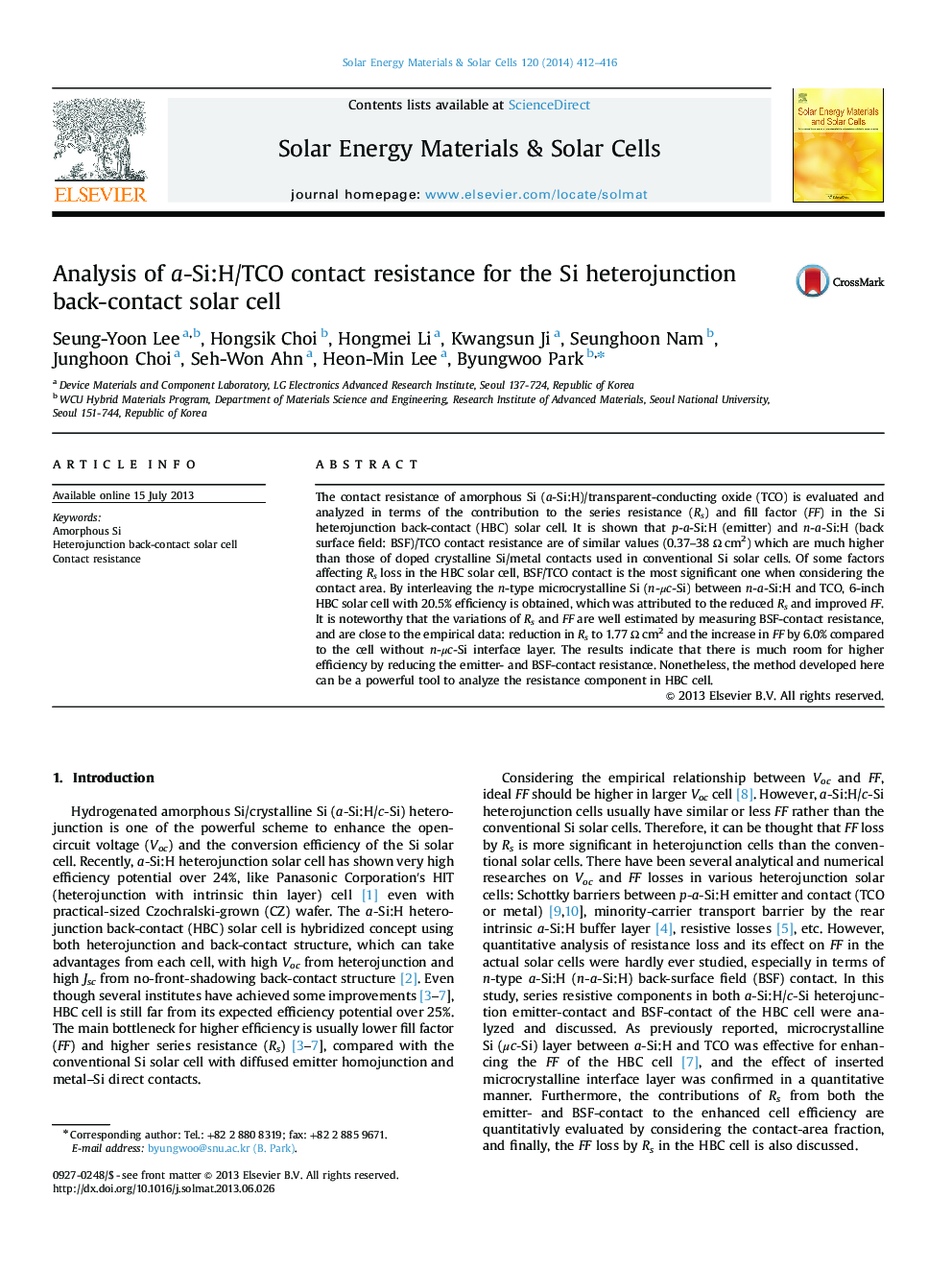| Article ID | Journal | Published Year | Pages | File Type |
|---|---|---|---|---|
| 10248768 | Solar Energy Materials and Solar Cells | 2014 | 5 Pages |
Abstract
The contact resistance of amorphous Si (a-Si:H)/transparent-conducting oxide (TCO) is evaluated and analyzed in terms of the contribution to the series resistance (Rs) and fill factor (FF) in the Si heterojunction back-contact (HBC) solar cell. It is shown that p-a-Si:H (emitter) and n-a-Si:H (back surface field: BSF)/TCO contact resistance are of similar values (0.37-38 Ω cm2) which are much higher than those of doped crystalline Si/metal contacts used in conventional Si solar cells. Of some factors affecting Rs loss in the HBC solar cell, BSF/TCO contact is the most significant one when considering the contact area. By interleaving the n-type microcrystalline Si (n-μc-Si) between n-a-Si:H and TCO, 6-inch HBC solar cell with 20.5% efficiency is obtained, which was attributed to the reduced Rs and improved FF. It is noteworthy that the variations of Rs and FF are well estimated by measuring BSF-contact resistance, and are close to the empirical data: reduction in Rs to 1.77 Ω cm2 and the increase in FF by 6.0% compared to the cell without n-μc-Si interface layer. The results indicate that there is much room for higher efficiency by reducing the emitter- and BSF-contact resistance. Nonetheless, the method developed here can be a powerful tool to analyze the resistance component in HBC cell.
Keywords
Related Topics
Physical Sciences and Engineering
Chemical Engineering
Catalysis
Authors
Seung-Yoon Lee, Hongsik Choi, Hongmei Li, Kwangsun Ji, Seunghoon Nam, Junghoon Choi, Seh-Won Ahn, Heon-Min Lee, Byungwoo Park,
